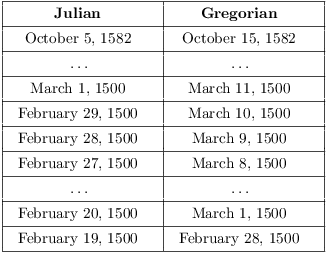The Julian calendar was introduced by Julius Caesar in 45 BCE and was used throughout the Roman Empire. It was based on the solar year, with a year being defined as 365.25 days long. To account for the extra quarter of a day, an extra day, known as a leap day, was added every four years. However, this system resulted in an error of about 11 minutes per year, causing the calendar to drift over time.
By the 16th century, the Julian calendar was out of sync with the seasons. To address this issue, Pope Gregory XIII introduced the Gregorian calendar in 1582. The Gregorian calendar made several adjustments to the Julian calendar to bring it back in line with the solar year, including skipping leap years in years ending in “00” unless they are divisible by 400.
Gregorian Calendar Vs. Julian Calendar
The Gregorian Calendar
The Gregorian calendar is the calendar system most widely used today. It is a solar calendar based on the rotation of the Earth around the Sun, with an average year length of 365.2425 days. To keep the calendar in sync with the seasons, leap years are used to account for the extra quarter of a day. However, the Gregorian calendar is still not perfect and has an error of about 26 seconds per year.
Despite its imperfections, the Gregorian calendar is widely used for civil purposes around the world. It is the calendar system used for international business, travel, and communication. The Gregorian calendar has become the standard for most countries, with some exceptions where other calendar systems are still in use.
Conclusion
In conclusion, the Gregorian calendar and Julian calendar are two of the most well-known calendar systems in history. While the Julian calendar laid the foundation for modern calendar systems, the Gregorian calendar has become the standard for most of the world. Understanding the differences between these two calendars can help us appreciate the history and evolution of timekeeping.
